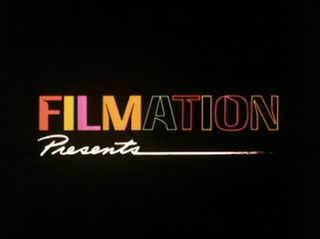
Filmation Associates was an American production company that produced animation and live-action programming for television from 1963 until 1989. Located in Reseda, California, the animation studio was founded in 1962. Filmation's founders and principal producers were Lou Scheimer, Hal Sutherland and Norm Prescott.
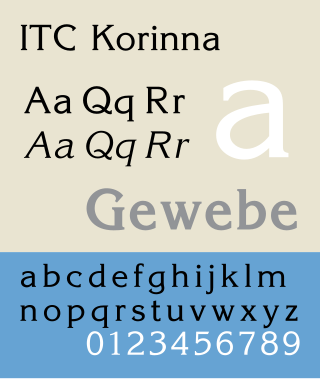
Korinna is a serif typeface, first released by the H. Berthold AG type foundry in 1904. A revival of the typeface was designed in 1974 by Ed Benguiat and Vic Caruso for the International Typeface Corporation (ITC). Their version follows the formulary ITC approach of increased x-height, and multiple weights from light to ultra. The face is named for the ancient Greek poet.
A title sequence is the method by which films or television programmes present their title and key production and cast members, utilizing conceptual visuals and sound. It typically includes the text of the opening credits, and helps establish the setting and tone of the program. It may consist of live action, animation, music, still images, and/or graphics. In some films, the title sequence is preceded by a cold open.

Microgramma is a sans-serif typeface which was designed by Aldo Novarese and Alessandro Butti for the Nebiolo Type Foundry in 1952. It became popular for use with technical illustrations in the 1960s and was a favourite of graphic designers by the early seventies, its uses ranging from publicity and publication design to packaging, largely because of its availability as a Letraset typeface. Early typesetters also incorporated it.

A production logo, vanity card, vanity plate, or vanity logo is a logo used by movie studios and television production companies to brand what they produce and to determine the production company and the distributor of a television show or film. Production logos are usually seen at the beginning of a theatrical movie or video game, and/or at the end of a television program or TV movie. Many production logos have become famous over the years, such as the 20th Century Studios's monument and searchlights and MGM's Leo the Lion. Unlike logos for other media, production logos can take advantage of motion and synchronized sound, and almost always do.

Copperplate Gothic is a typeface designed by Frederic W. Goudy and first produced by American Type Founders (ATF) beginning in 1901.

Matthew Charles Berry is an English actor, comedian, musician, and writer. He has appeared in comedy television roles in The IT Crowd, Garth Marenghi's Darkplace, The Mighty Boosh, Snuff Box, What We Do in the Shadows, and Toast of London, the last of which he also co-created. The series earned him the 2015 BAFTA Award for Best Male Performance in a Comedy Programme. As a musician, he has released nine studio albums.
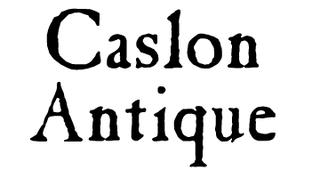
Caslon Antique is a decorative American typeface that was designed in 1894 by Berne Nadall. It was originally called "Fifteenth Century", but was renamed "Caslon Antique" by Nadall's foundry, Barnhart Bros. & Spindler, in the mid-1920s.

Peignot is a sans-serif display typeface, designed by the poster artist A. M. Cassandre in 1937. It was commissioned by the French type foundry Deberny & Peignot.

Leo the Lion is the mascot for the Hollywood film studio Metro-Goldwyn-Mayer and one of its predecessors, Goldwyn Pictures. The logo was created by artist Lionel S. Reiss, who served as art director at Paramount Pictures.

Windsor is a serif typeface created by Elisha Pechey (1831-1902) and released by the Stephenson Blake type foundry. It is intended for use such as display and in headings rather than for body text.
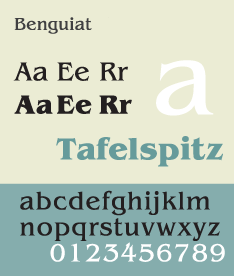
ITC Benguiat is a decorative serif typeface designed by Ed Benguiat and released by the International Typeface Corporation (ITC) in 1977. The face is loosely based upon typefaces of the Art Nouveau period but is not considered an academic revival. The face follows ITC's design formulary of an extremely high x-height, combined with multiple widths and weights.
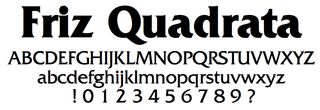
Friz Quadrata is a glyphic serif typeface designed by Ernst Friz and Victor Caruso for Visual Graphics Corporation in 1965. VGC worked with the International Typeface Corporation to create an additional, bold weight. It is currently available from the ITC and Linotype foundries. Because of its level of detail and graphic weight, it is often used as a display font, for short texts and headlines.

ITC Avant Garde Gothic is a geometric sans serif font family based on the logo font used in the Avant Garde magazine. Herb Lubalin devised the logo concept and its companion headline typeface, and then he and Tom Carnase, a partner in Lubalin's design firm, worked together to transform the idea into a full-fledged typeface.

Handel Gothic is a geometric sans-serif typeface designed in 1965 by Donald J. Handel (1936–2002), who worked for the graphic designer Saul Bass.

American Typewriter is a slab serif typeface created in 1974 by Joel Kaden and Tony Stan for International Typeface Corporation. It is based on the slab serif style of typewriters; however, unlike most true typewriter fonts, it is a proportional design: the characters do not all have the same width. American Typewriter is often used to suggest an old-fashioned or industrial image. It was originally released in cold type (photocomposition) before being released digitally. Like many ITC fonts, it has a range of four weights from light to bold and separate condensed styles. Some releases do not have italics.
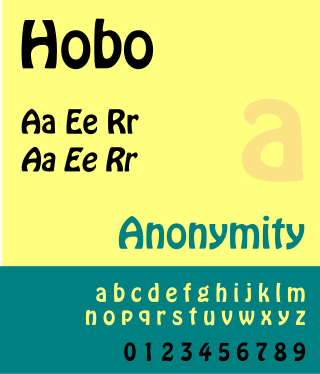
Hobo is a sans-serif typeface. It is unique for having virtually no straight lines or descenders. It was created by Morris Fuller Benton and issued by American Type Founders in 1910. A light version, Light Hobo, was released in 1915. Matrices were offered for mechanical composition by Intertype. The lower case letters provided the basis for Robert Wiebking's Advertisers Gothic of 1917.
The logo of the BBC has been a brand identity for the corporation and its work since the 1950s in a variety of designs. Until the introduction of a logo in 1958, the corporation had relied on its coat of arms for official documentation and correspondence, although it rarely appeared onscreen. With the increased role of television for the BBC in the 1960s, particularly after the foundation of the ITV network, the corporation used its logo to increase viewer familiarity and to standardise its image and content. The logo has since been redesigned a number of times, most recently in 2021 with the BBC blocks, a logo designed to work across media. From 1958, there have been six different BBC logos. The first logo of the network was used from 1958 to 1963, the second from 1963 to 1971, the third from 1971 to 1992, the fourth from 1988 to 1997, the fifth from 1997 to 2021, while the sixth and current logo was adopted in October 2021.
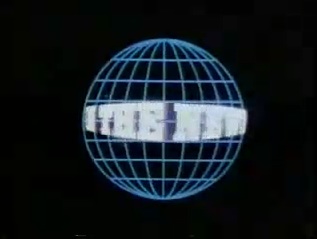
In the News is an American series of two-minute televised video segments that summarized topical news stories for children and pre-teens. The segments were broadcast in the United States on the CBS television network from 1971 until 1986, between Saturday morning animated cartoon programs, alongside features like Schoolhouse Rock! and One to Grow On, which aired on competing networks ABC and NBC, respectively. NBC also produced a competing segment called Ask NBC News.


















